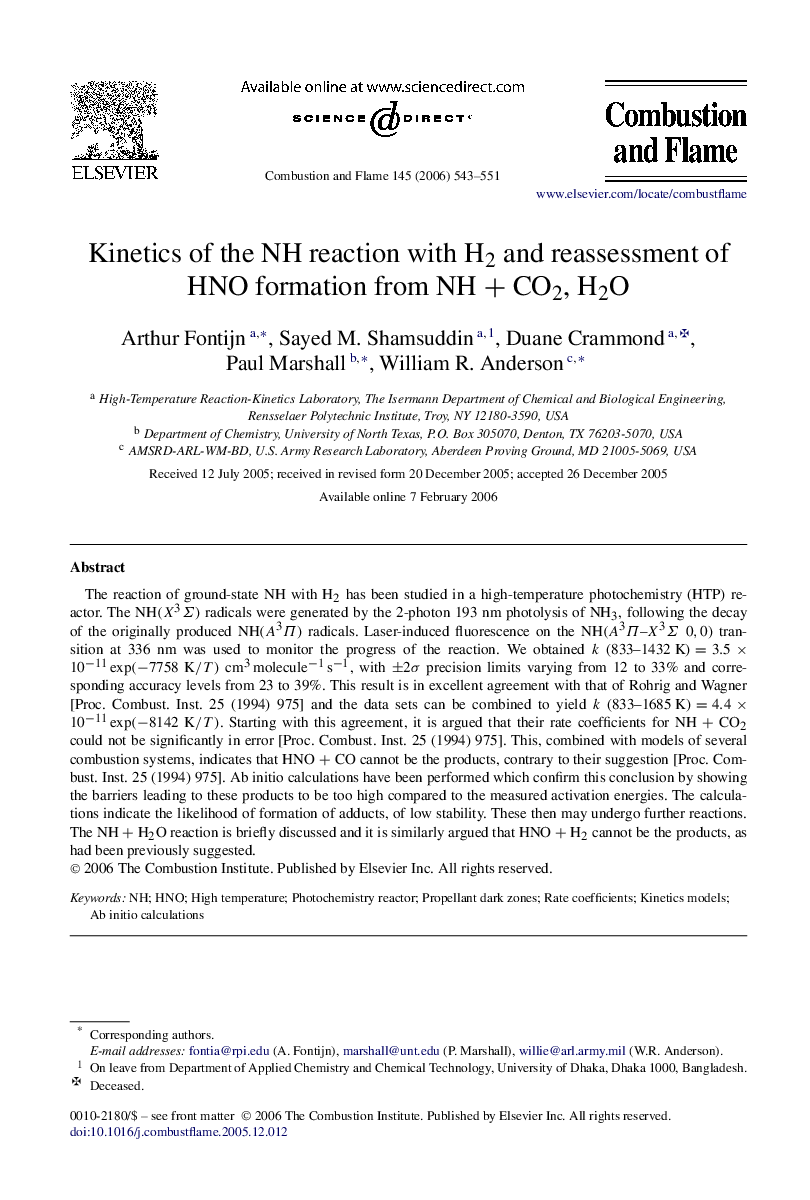| Article ID | Journal | Published Year | Pages | File Type |
|---|---|---|---|---|
| 170158 | Combustion and Flame | 2006 | 9 Pages |
The reaction of ground-state NH with H2 has been studied in a high-temperature photochemistry (HTP) reactor. The NH(X3Σ)NH(X3Σ) radicals were generated by the 2-photon 193 nm photolysis of NH3, following the decay of the originally produced NH(A3Π)NH(A3Π) radicals. Laser-induced fluorescence on the NH(A3Π–X3Σ0,0) transition at 336 nm was used to monitor the progress of the reaction. We obtained k(833–1432 K)=3.5×10−11exp(−7758K/T)cm3molecule−1s−1, with ±2σ±2σ precision limits varying from 12 to 33% and corresponding accuracy levels from 23 to 39%. This result is in excellent agreement with that of Rohrig and Wagner [Proc. Combust. Inst. 25 (1994) 975] and the data sets can be combined to yield k(833–1685 K)=4.4×10−11exp(−8142K/T). Starting with this agreement, it is argued that their rate coefficients for NH + CO2 could not be significantly in error [Proc. Combust. Inst. 25 (1994) 975]. This, combined with models of several combustion systems, indicates that HNO + CO cannot be the products, contrary to their suggestion [Proc. Combust. Inst. 25 (1994) 975]. Ab initio calculations have been performed which confirm this conclusion by showing the barriers leading to these products to be too high compared to the measured activation energies. The calculations indicate the likelihood of formation of adducts, of low stability. These then may undergo further reactions. The NH + H2O reaction is briefly discussed and it is similarly argued that HNO + H2 cannot be the products, as had been previously suggested.
